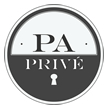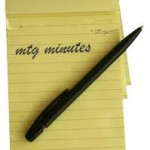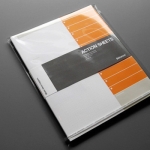For any meeting to take place in a procedural way, there are a few important and necessary documents involved without which the meeting will not go smoothly.
The necessary documents for a meeting are:
Agenda
The meeting agenda is the meeting plan. Document created by the PA, secretary or admin. It is then approved by the chairman and circulated to the other members who will be attending the meeting. It can be distributed either digitally or as hard copies. It is always best to have a few spare copies. It lays out the topics that need to be discussed and the tasks that need to be accomplished in the given meeting time. The meeting agenda provides structure to the meeting. It is often written in an outline format with an assigned time for each section and brief notes under each section. Include your team’s meeting agendas for both team meetings and sponsor meetings. Each agenda should be labeled with a header that includes the date and the purpose of the meeting. The agenda has details of the name of the meeting, meeting date, time of meeting and the venue of meeting at the top. It is then followed by the attendees, apologies and visitors / speakers. Then follows the agenda items, where urgent and important matters are listed on top of the list. Mandatory items on the agenda list are, previous minutes or Confirmation of previous minutes, matters arising and any other business. The rest are the items gathered from relevant members involved with the meeting.
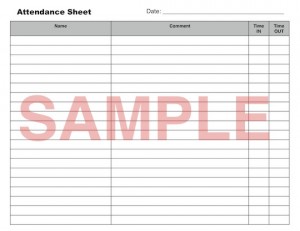 Attendance sheet
Attendance sheet
In each Meeting an attendance sheet shall be kept including the indications required by law. This attendance sheet, duly initialed by the shareholders present and the agents and to which is attached the powers granted to each agent and any votes by mail, shall be certified true by the officers of the meeting.This document is a list of all the attendees in the meeting. To have accurate details, a few columns are included like, Name, Position, Contact number, Email address. This will help the minute taker with writing down names in minutes and also will help with contacting them easily when necessary, especially when there are external members attending the meeting. Please see a format to the right that I use in my organisation for attendance.
This is not usually used for internal meetings, but used for meetings where external customers or partnership organisations are involved. But it is always good to have one where so many members or different departments are attending a meeting and there may be people who you do not recognise. This also cuts down your time on writing down the list of attendees especially when there are a large number of attendees.
Glossary of terms and acronyms
If the meeting will include discussion of business where technical terms and acronyms will be used, and if there are attendees who will not be familiar with those terms and acronyms, it is always best to give a list of these with a brief description or meaning. This will help them follow the meeting with ease and stop too many unnecessary interruptions.
Code of ethics/codes of conduct 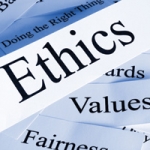
“Principles, values, standards, or rules of behavior that guide the decisions, procedures and systems of an organization in a way that (a) contributes to the welfare of its key stakeholders, and (b) respects the rights of all constituents affected by its operations.”
This is not used in all meetings, but can be used in board meetings, and meetings where public are involved etc. Business meeting ethics are put in place to set behavioral parameters and expectations for the group. Meeting ethics extend beyond the confines of the conference room. It is unethical to share information that might be considered confidential or proprietary. This is a set of principles and expectations that are set out to the members, by which they have to adhere to, when participating in the meeting. It is set out for the smooth and success functionality of the meeting. In some meetings it is used to preserve freedom of speech. When all parties adhere to these ethics, there are fewer distractions, allowing for a more productive and time-efficient meeting.
These are minutes from the previous meeting and are brought in to the meeting to be read out and confirmed. Also the action points from the previous meeting are checked to see if they have been actioned, or at what status the actions are.
Often members want to dispense with the reading of the minutes because they do not feel that the minutes are important to hear. However, keep in mind that the minutes are a legal document for the organization. By approving the minutes, the members agree that this is what happened at the meeting. When a legal action has been brought against the organization, courts use minutes for evidence/ Therefore, it is important that the assembly (or a committee named for the purpose of approving the meeting) approves the minutes. There is no time limit on minute corrections.
Taking notes (Minutes)
Taking notes is the step towards preparing the minutes. This is the main document in a meeting as everything that takes place or is discussed or decided is recorded. Notes are taken down by secretaries or administrators or a similar office person and they are written down in an agreed style following organisations policies and procedures. A template can be used for ease of note-taking.
Attachments to minutes
Sometimes in meetings, a policy or procedure or a report may have to be read out and agreed. In this case, this document will be brought into the meeting read out to the members and this will have to be attached to the minutes. Details on how this is done will be discussed in a different section of this unit.
Presentation papers
Some meetings will have presentation papers. Although presentations are done on projectors, it is always good to give all the attendees a copy, so that they have a record of what was presented, and also it will help them note down important points that will be useful or helpful for them for future reference as the presentation goes on.
This sheet is not mandatory, but for clarity and for being properly organised, what you can do is, collect all the action points from the previous meeting and mention the status across each of them, so that it is easier to go through them during the meeting.
Weekly Progress Report (for team members)
Each team member should complete a weekly progress report at the end of every week. This report is used to assess the status of each team member in relation to their assigned tasks. It includes an explanation of the tasks that have been completed, the tasks that are currently being worked on, and the tasks that will be worked on over the next week. Weekly status reports facilitate discussion during team meetings and also facilitate effective project management.
Tools Specifically For Meeting Minutes
If you are wondering about the types of tools you might use specifically for meeting minutes, here are some tools that may be helpful.
- Google Docs Also supports collaborative note taking. [There are sample templates for minutes in Google docs. If you send out a meeting request using Google Calendar, you can attach a Google doc agenda outline. Once minutes are crafted (using the outline), you can simply share the document with the group (using their email addresses.]
- OneNote (if you are a Microsoft user) – Very fast allows for organization of notes. Also support audio recording with corresponding note time-stamping
- Evernote Great note taking tool
- Textpad / TextMate Fast, light weight, non-intrusive, requires that you manage your notes in txt files or export to another collaborative environment.
- Agreedo: supports creation of meeting minutes and tracking the results.
- Meetin.gs This online management tool is designed to assist you over the entire lifecycle of a meeting — use it to schedule the event using an online calendar tool and invites are sent to attendees that show up in Outlook or whatever scheduling tool they use.
- LessMeetings Another web-based meeting manager. Does all the stuff you’d expect to find in such a service. It helps you build and share the agenda, sends invites that interface with your recipient’s Outlook calendars, and it tracks and shares attachments, notes and action items. When you use the tool during the meeting, it tracks the agenda and time so you stay on track and end the meeting as scheduled.
- After The Meeting After the Meeting cuts down on the number of status updates and follow-up meetings you have by organising all of your action items, follow-up items, and to-dos in a single organised view that all attendees can see and reference quickly.
- Minutes.io Minutes.io gives you an elegant and easy to fill out template for every one of your meetings that makes sure you capture the attendees, what was discussed, what action items came out of the conversation, and who owns them.
- Meetingburner MeetingBurner is not just a great place to hold online meetings, it’s also good for hosting webinars, and sharing your screen. It includes Skype integration, conference lines, and one click recording and sharing. You’ll also get analytics for your meetings.
What are your tips for taking effective meeting minutes? Do you have any useful tools to share with us?
